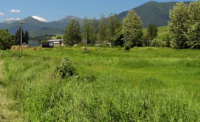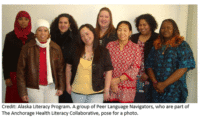By Liz Dalsey
Over 5.2 million American Indians and Alaska Natives (AI/AN) live across the United States. In 2013, approximately 1,319,000 AI/AN workers were employed in the U.S. workforce1,2. AI/AN workers are 42 percent more likely to be employed in a high-risk occupation (defined as an occupation where the injury and illness rate is more than twice the national average) as compared to non-Hispanic Whites.3 National data on occupational injuries, illnesses and fatalities among AI/AN are scarce and there is limited research on worker safety and health in tribal communities.
NIOSH American Indian/Alaska Native Initiative
In 2013, the National Institute for Occupational Safety and Health (NIOSH) launched an initiative to partner with AI/AN communities, tribal serving organizations, and other stakeholders to provide occupational safety and health support. The main goal of the initiative is to maximize resources to build and strengthen capacity to ensure workers make it home safely to their families in tribal communities. All activities are coordinated with the U.S. Centers for Disease Control and Prevention’s Office for State, Tribal, Local and Territorial Support (OSTLTS).
Tribal Worker Safety and Health Workshop
In August, 2015, NIOSH and the Center for Health, Work and Environment, a Center within the Colorado School of Public Health, convened the first partnership workshop on the occupational safety and health issues of AI/AN workers. Tribal representatives, tribal serving organizations, academia, and state and federal government agencies came together to advance worker safety and health among AI/AN.
Attendees represented 14 states, primarily from the Western United States. Tribal safety and health professionals, tribal epidemiologists, state Health Department representatives and physicians attended. Representatives from the Navajo Nation and Shoshone-Bannock Tribes presented their Tribal occupational safety and health programs. Workshop presentations are available here.
The workshop established new and fostered existing relationships among the many organizations and tribes. Additionally, an AI/AN occupational safety and health network was created to share resources and build capacity.
Partnerships
Ongoing discussions with partners continue to...Click here to read the rest of the blog post.









